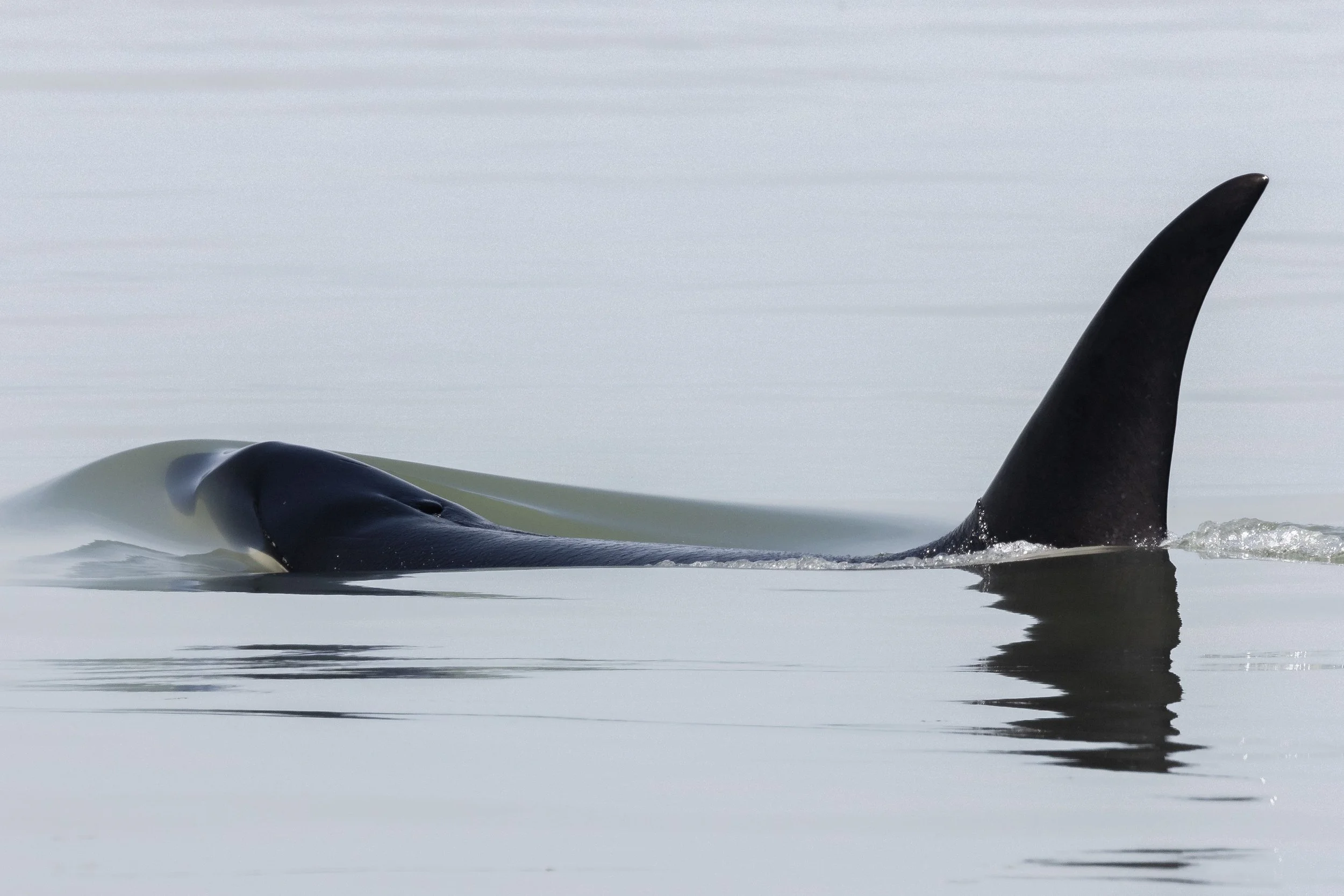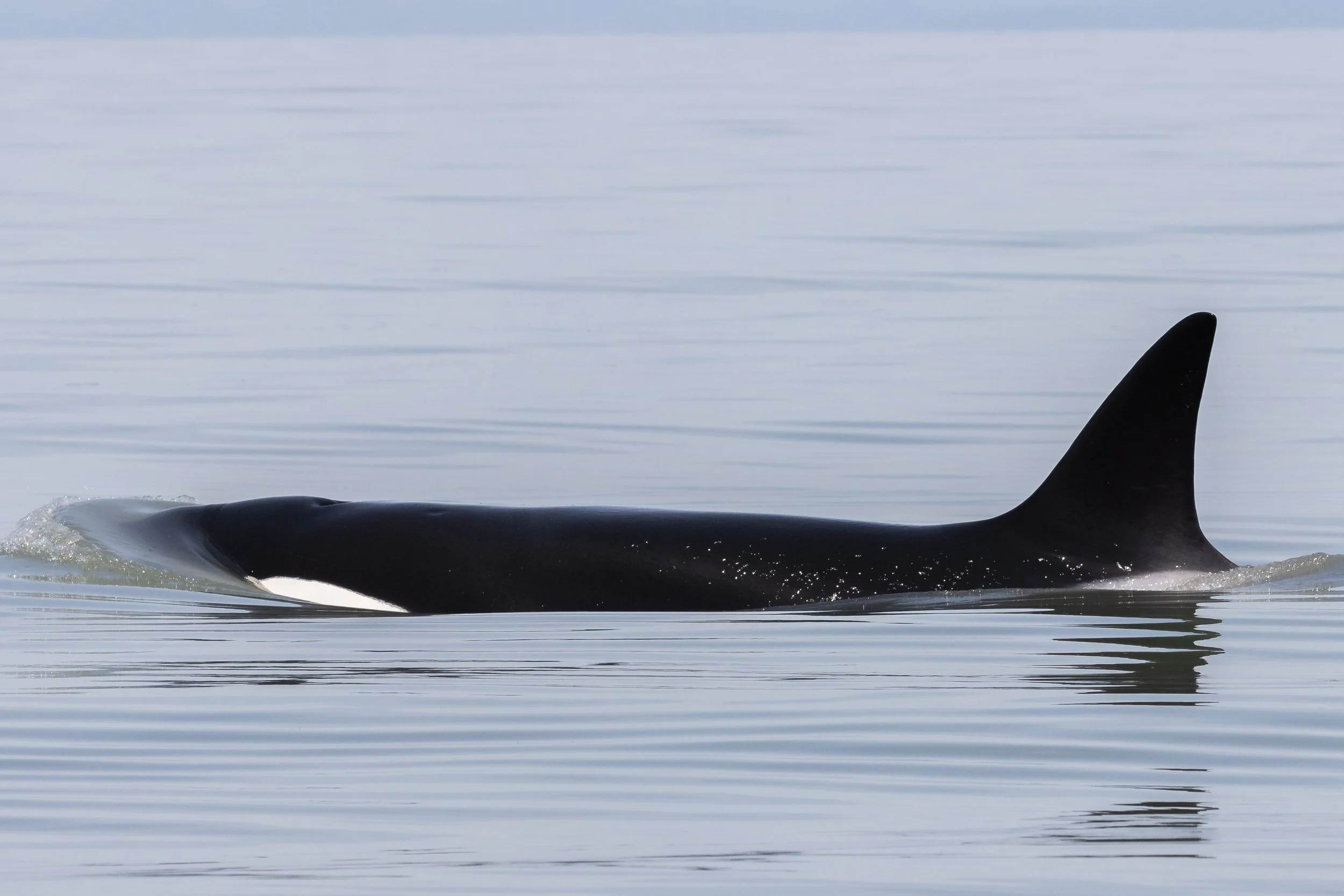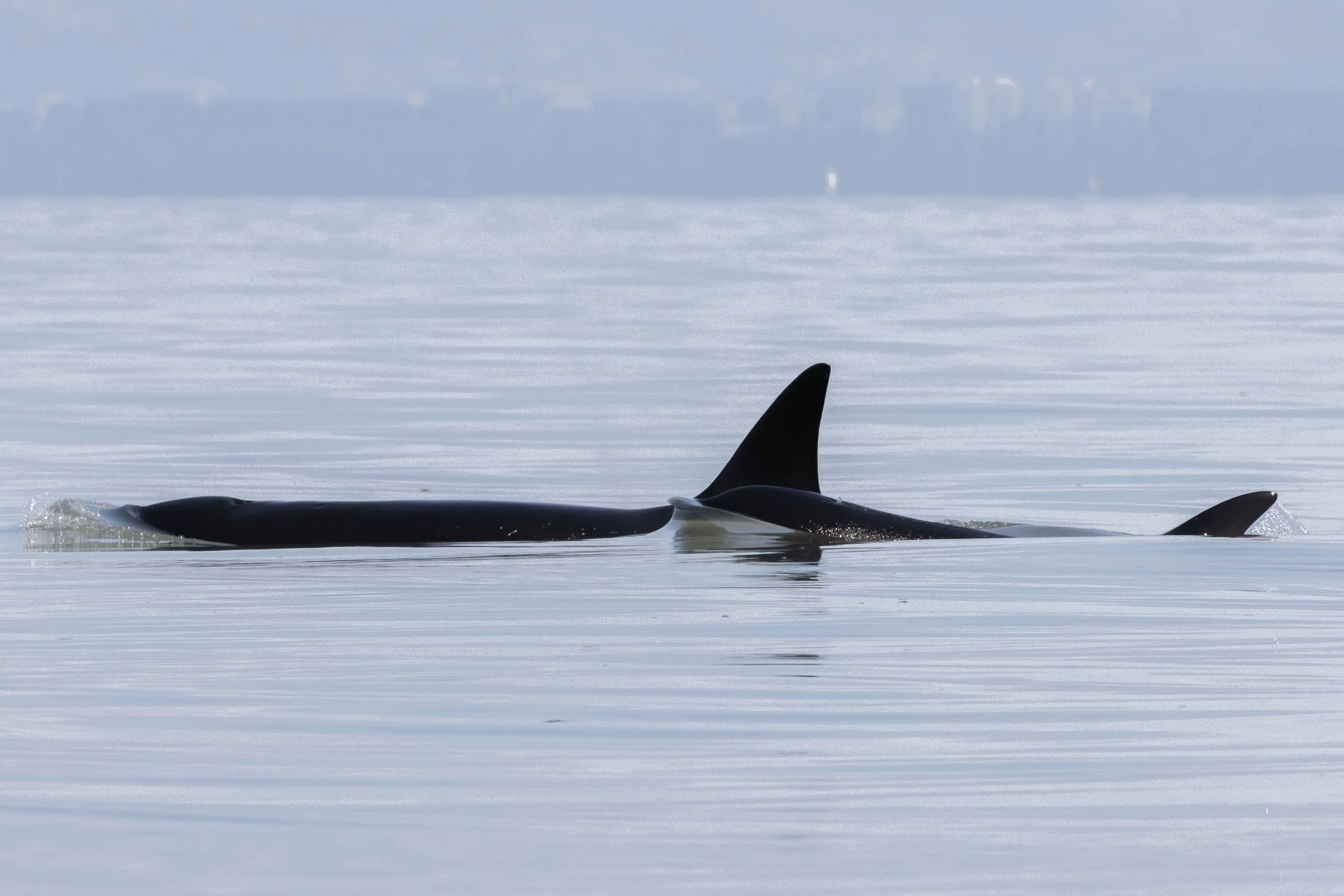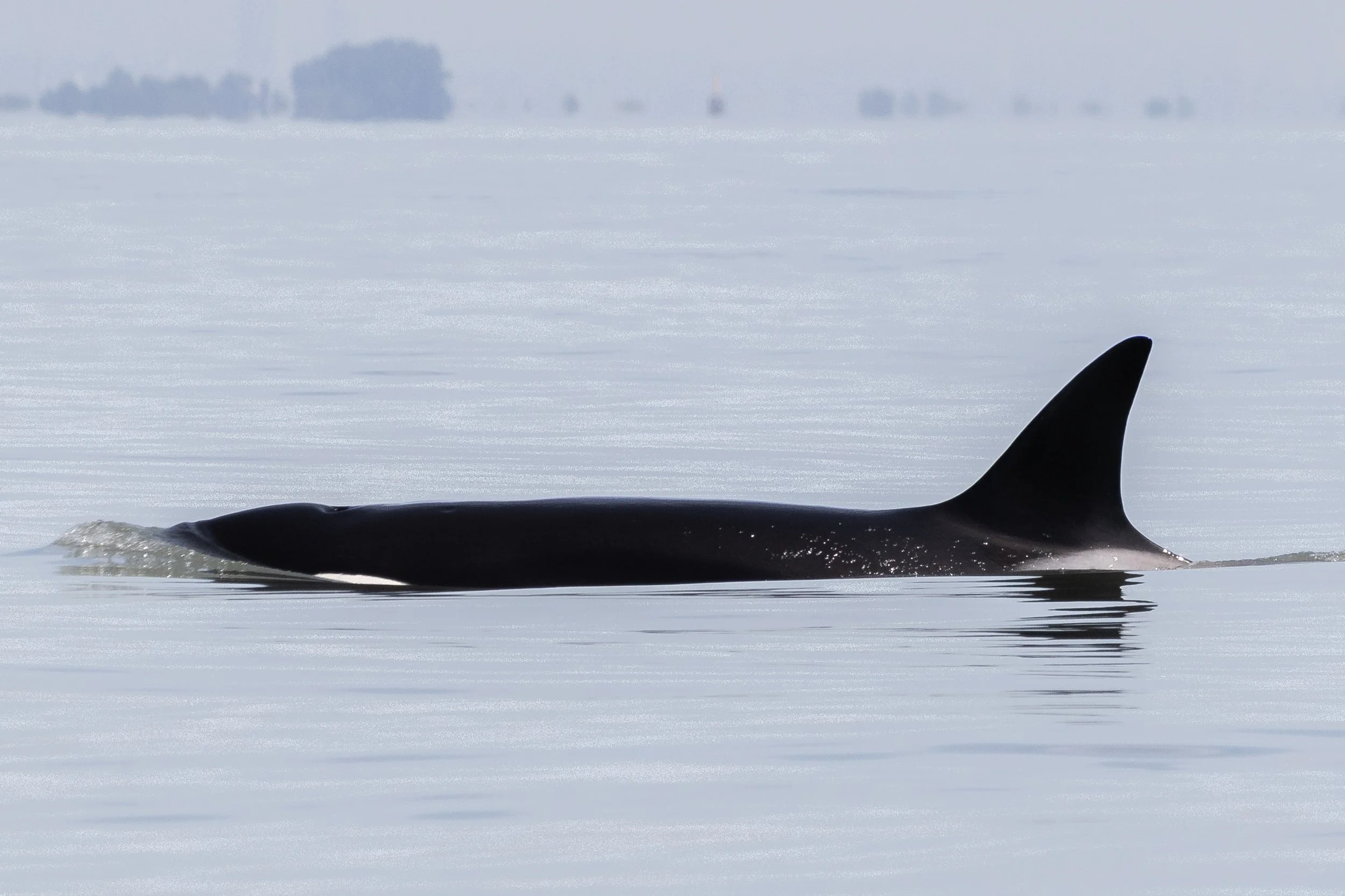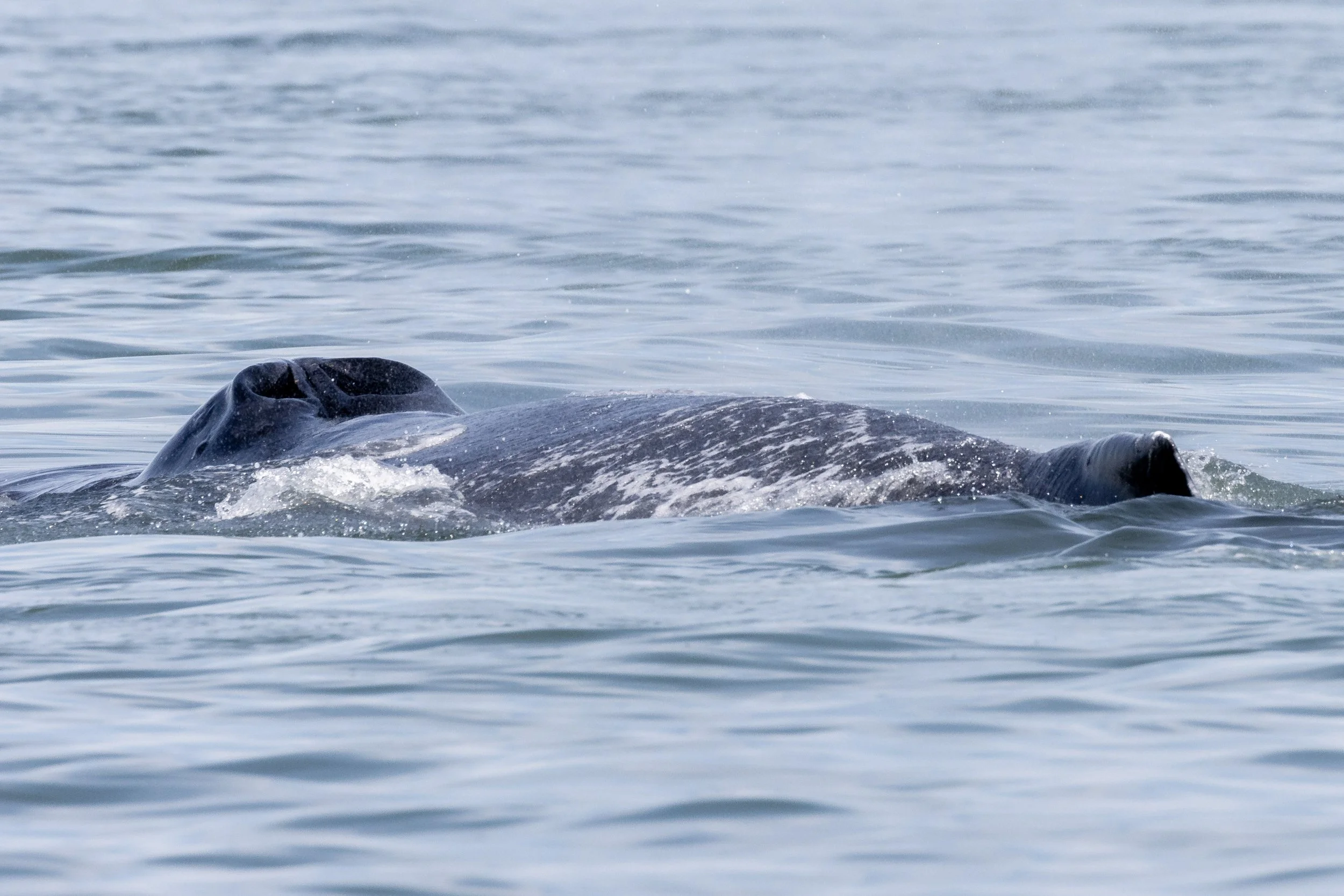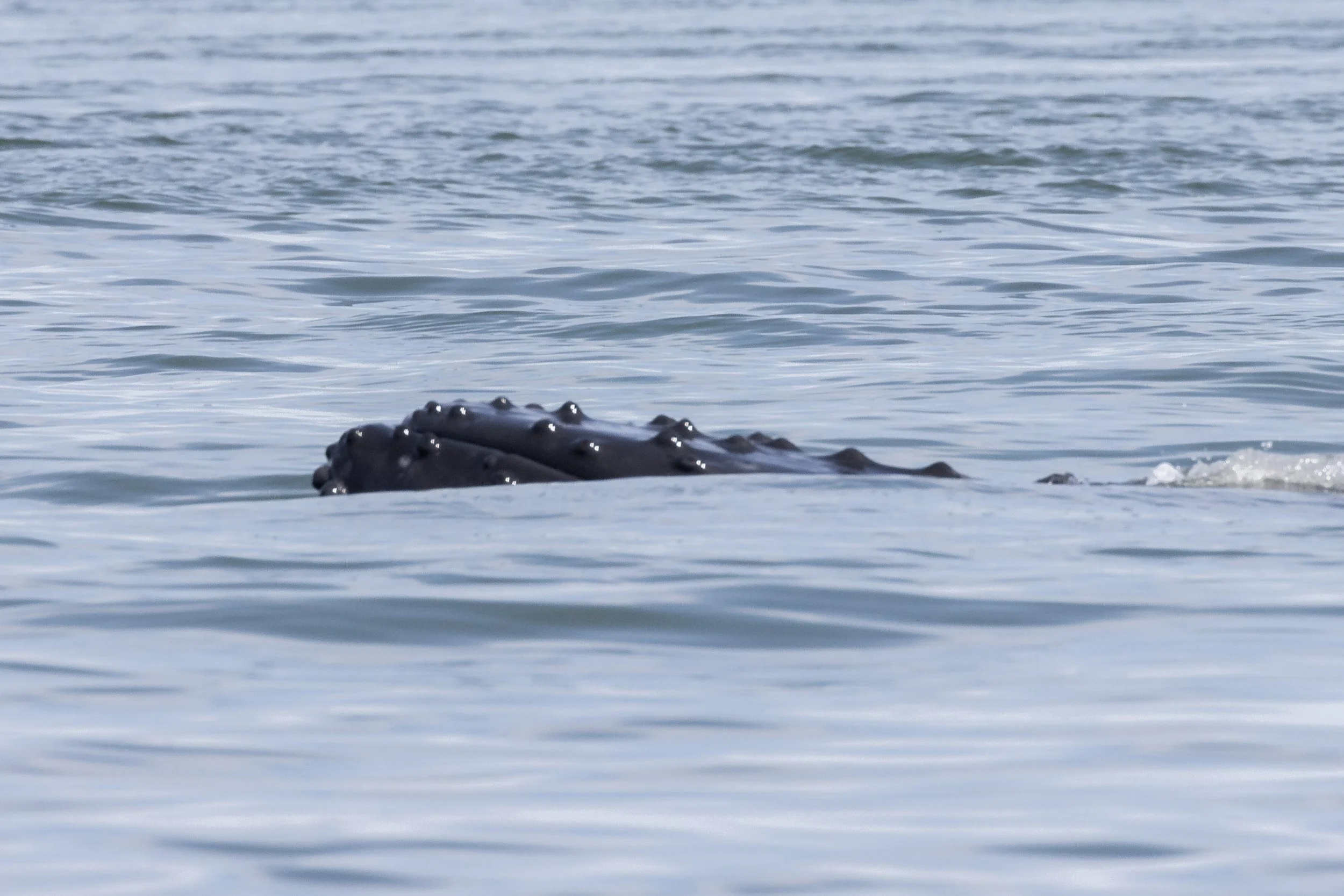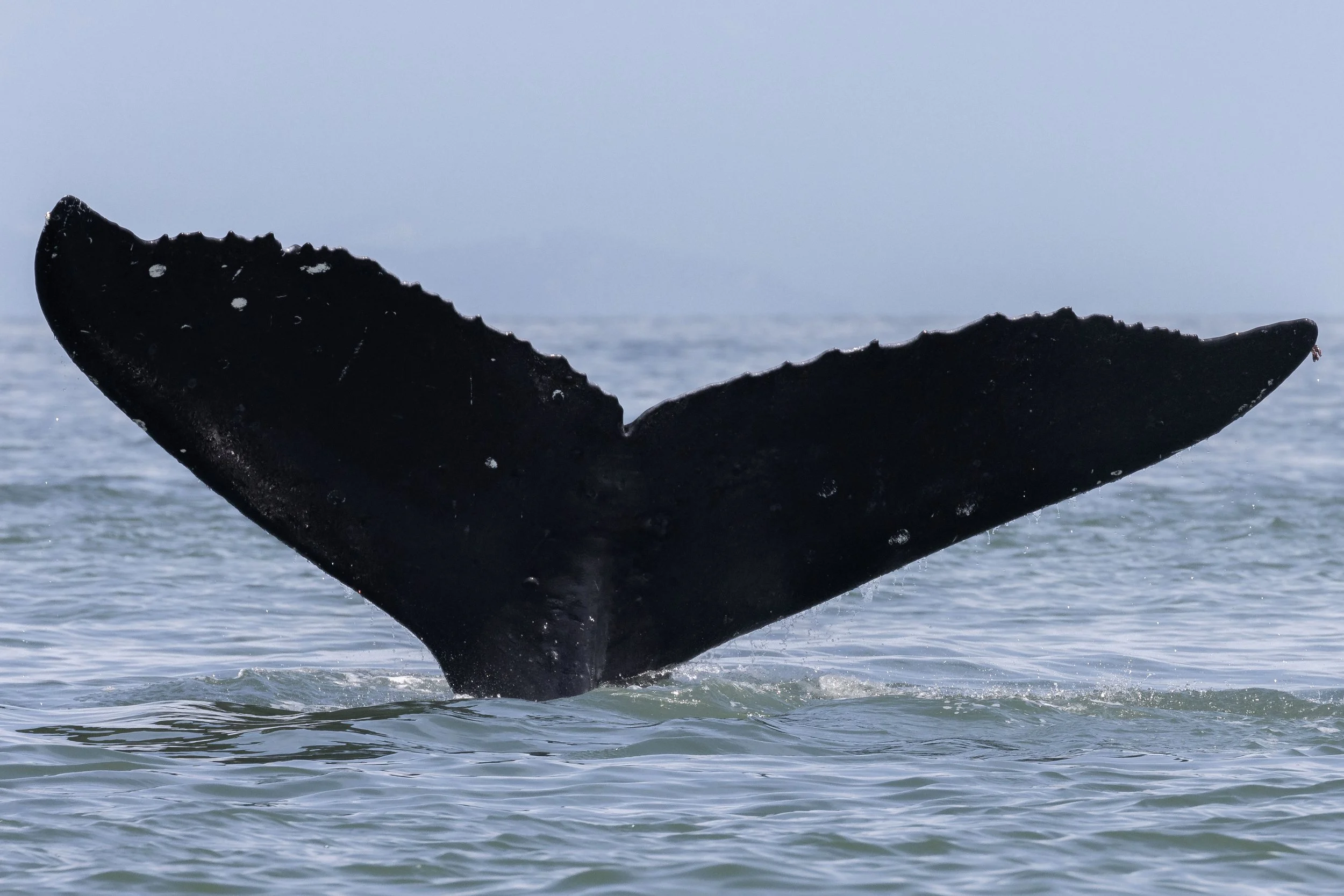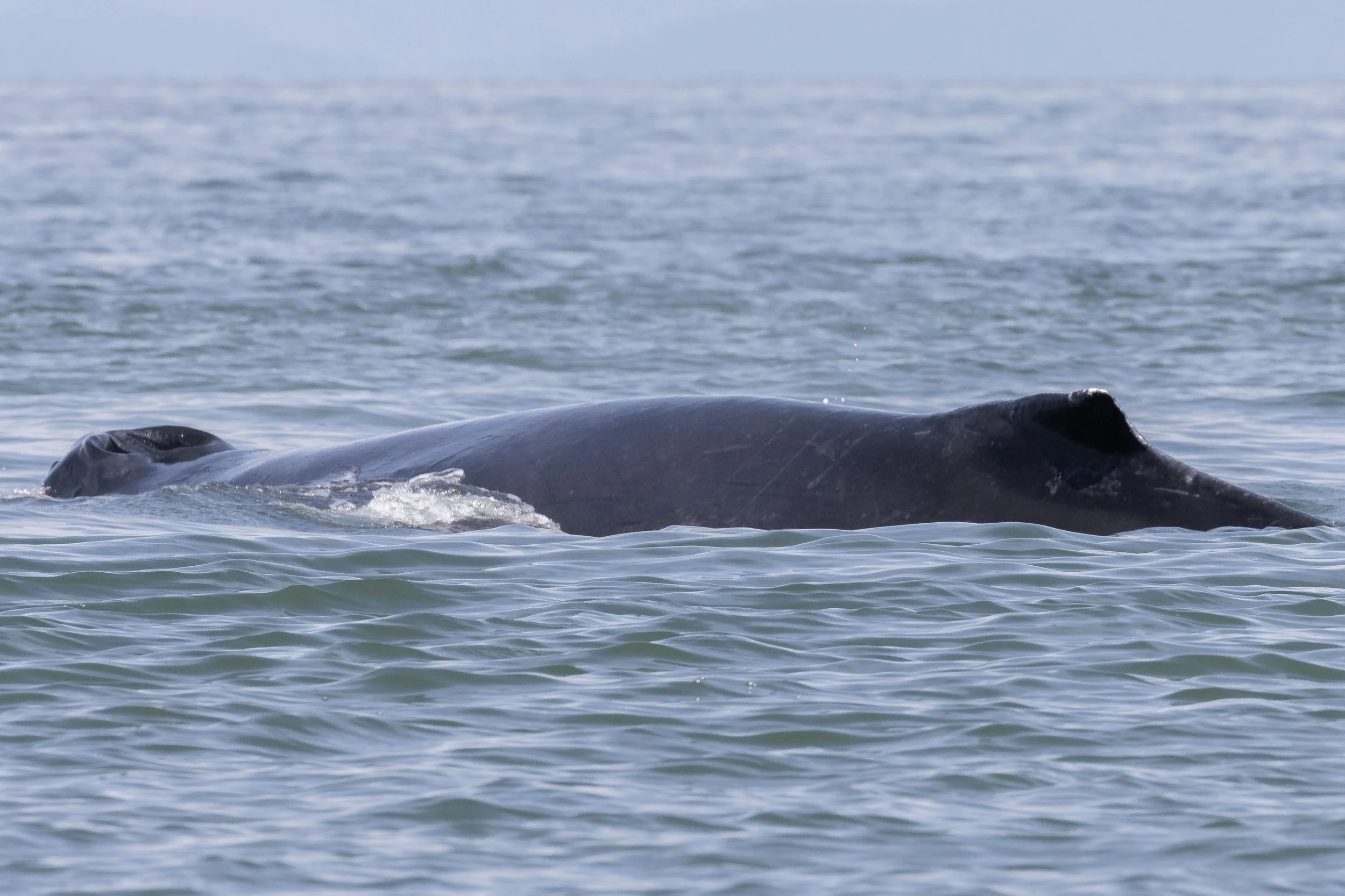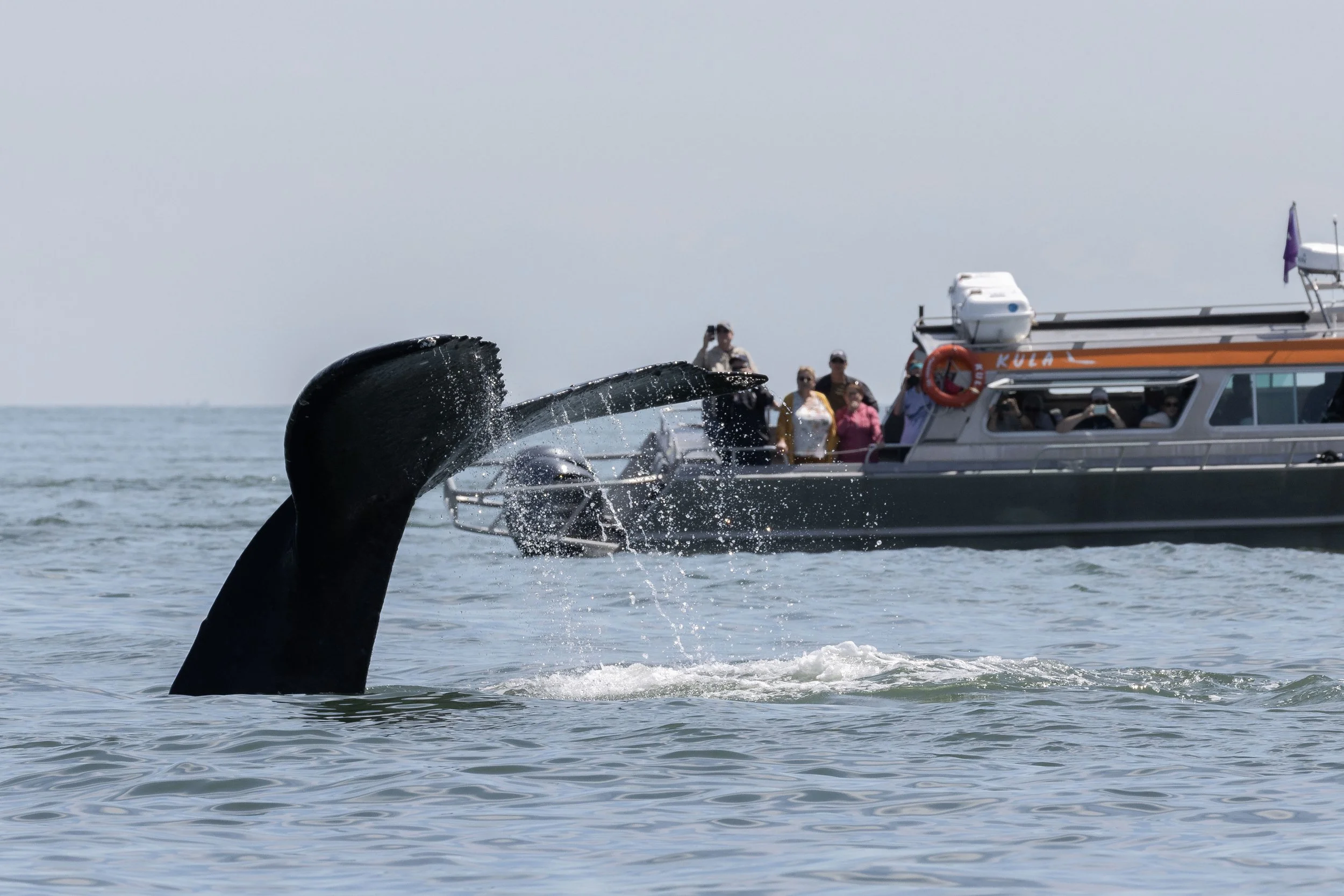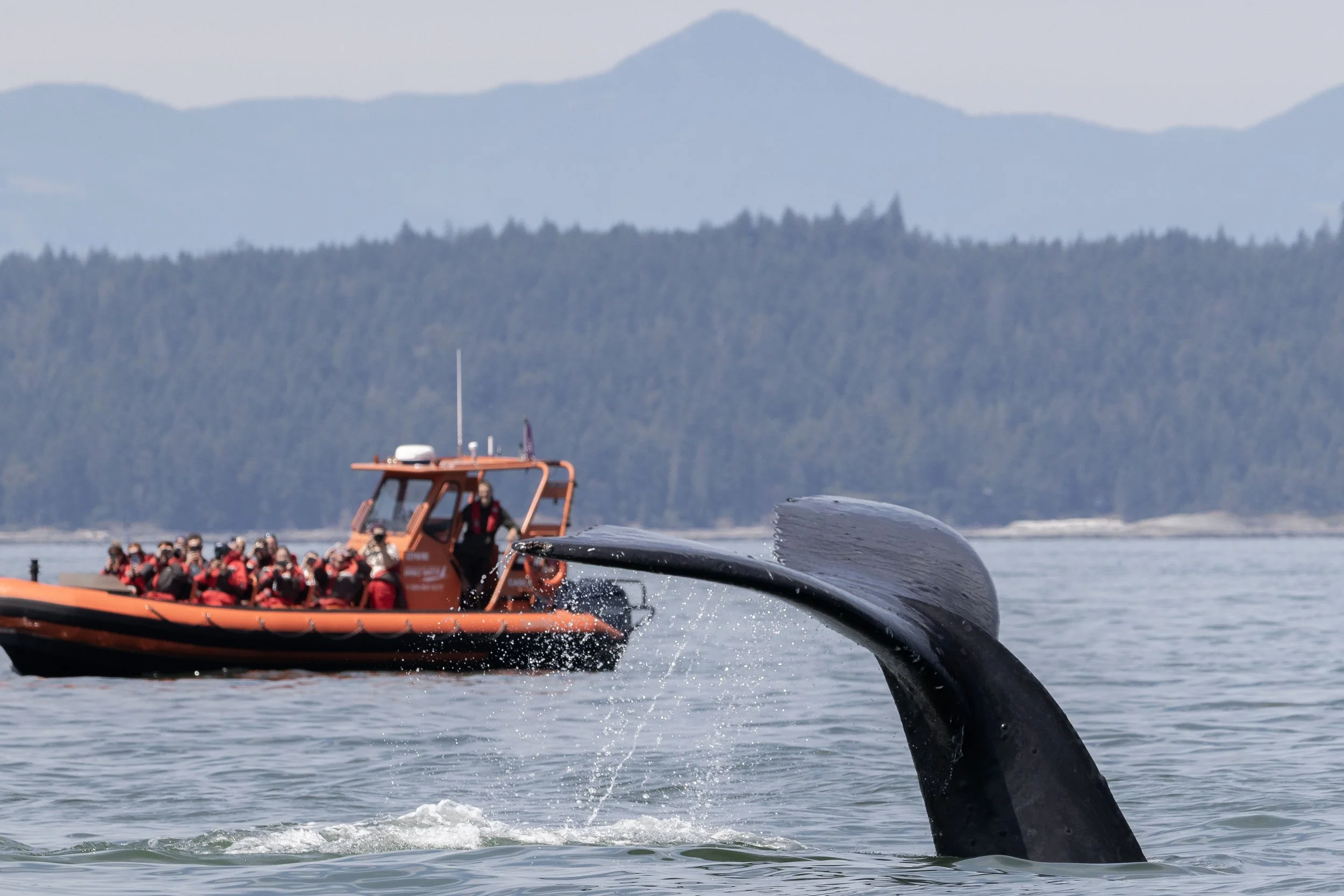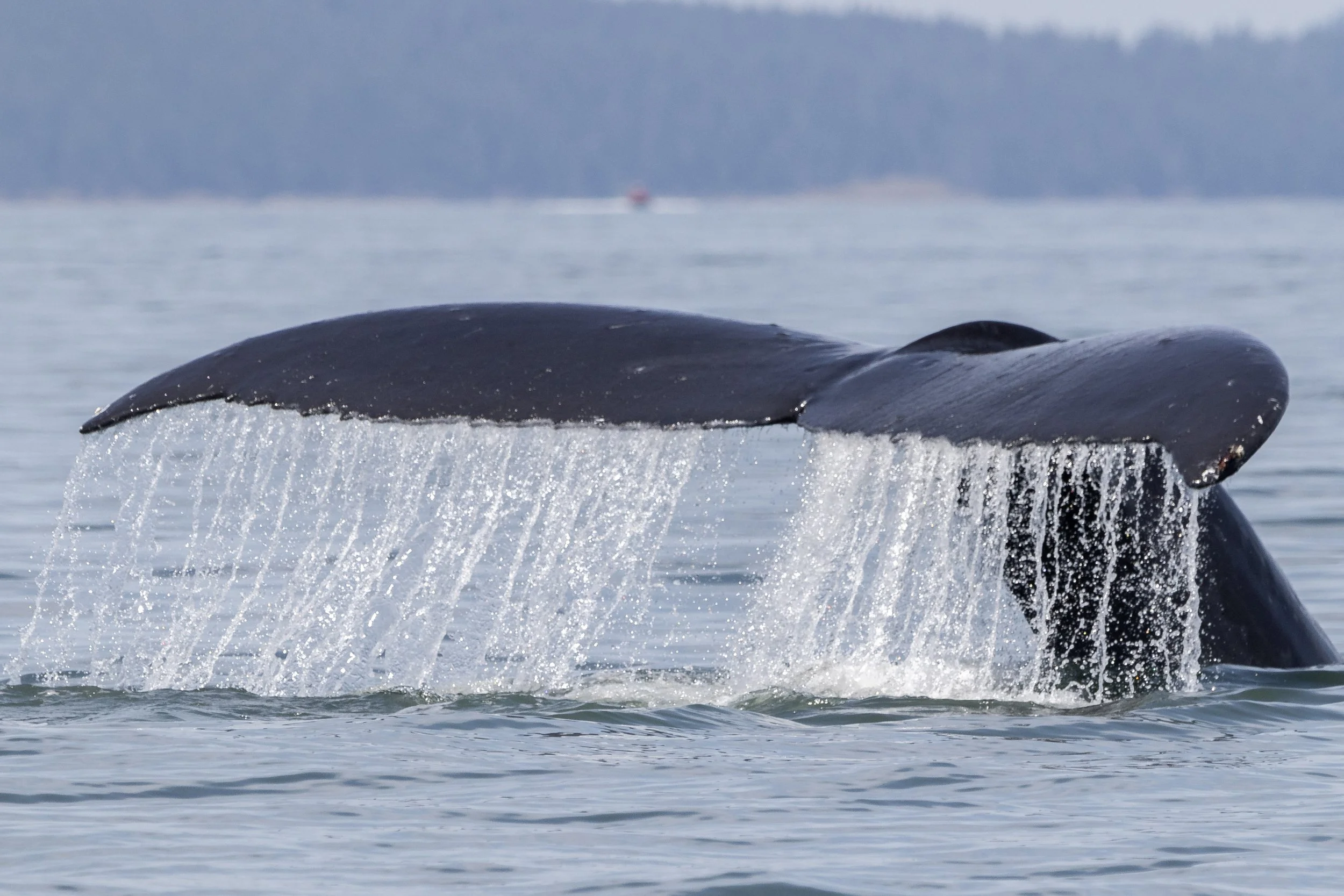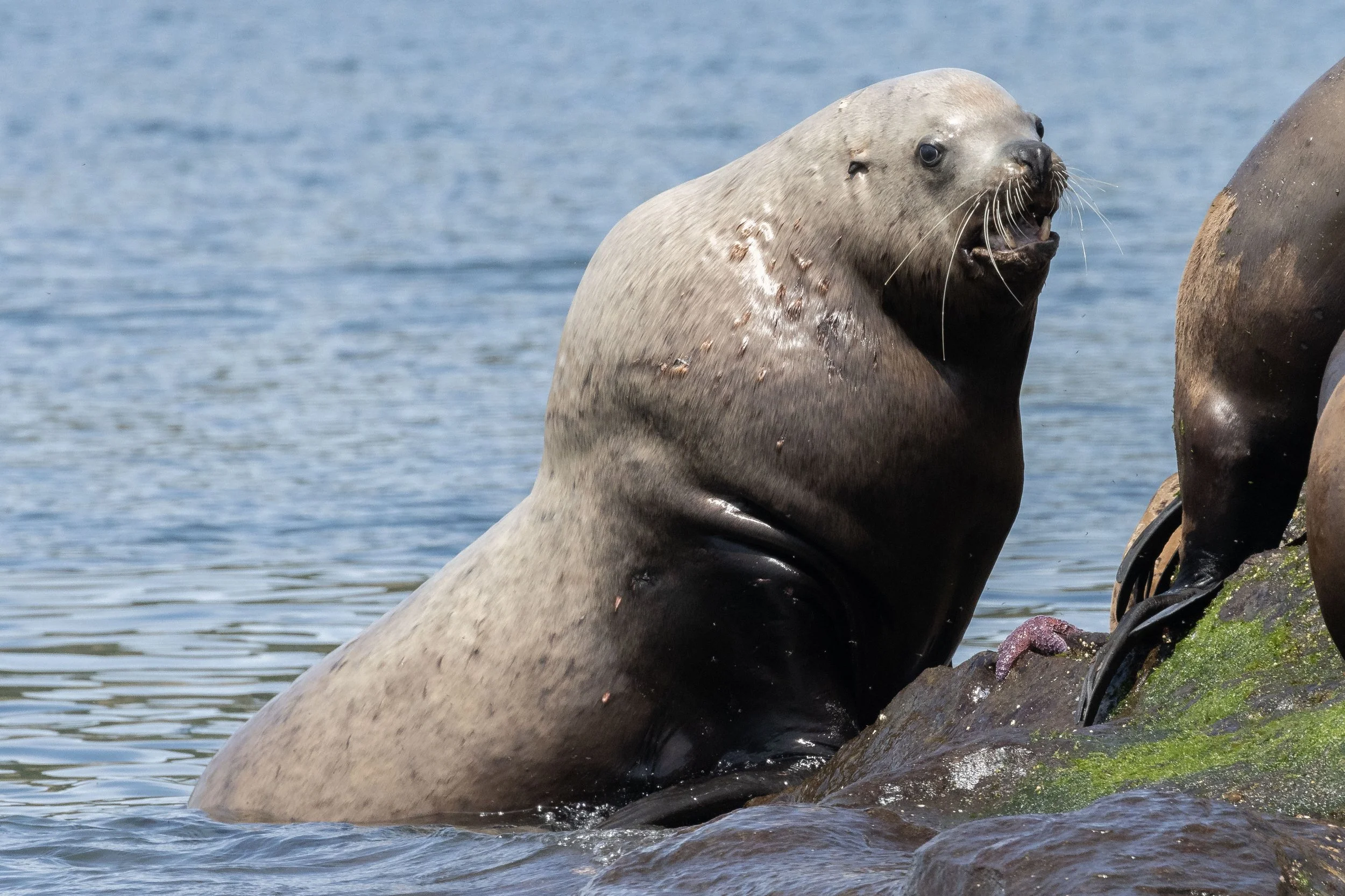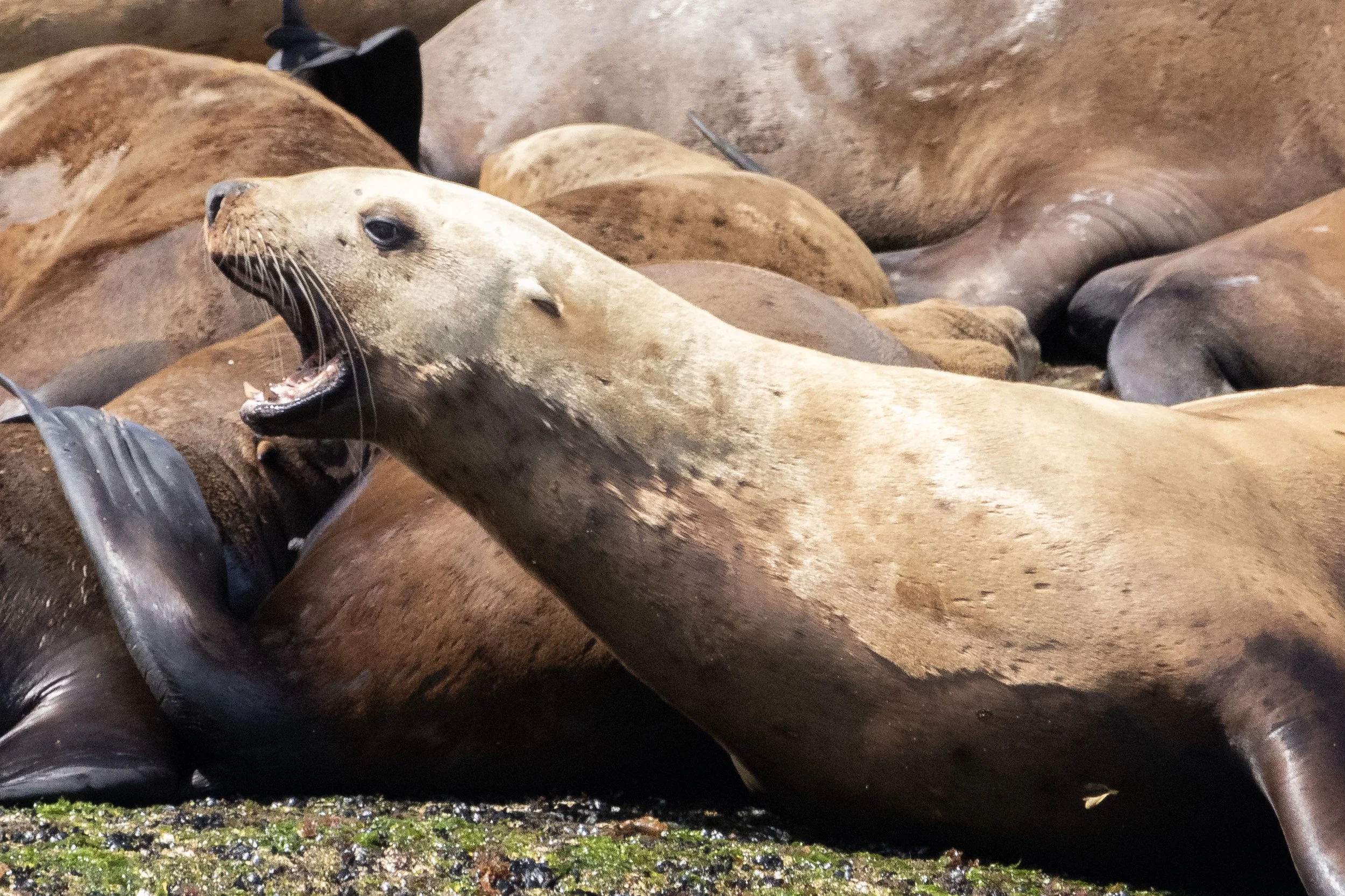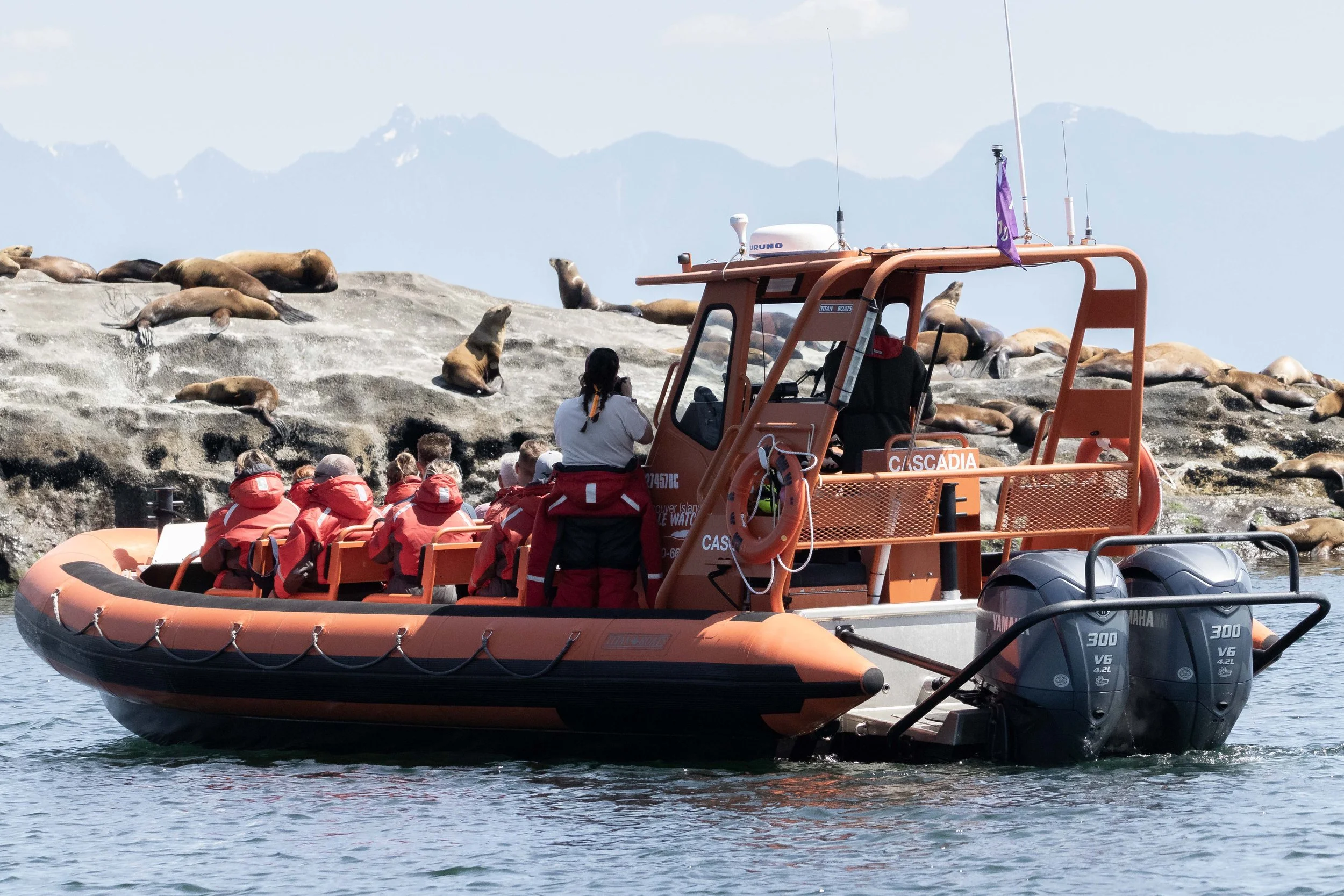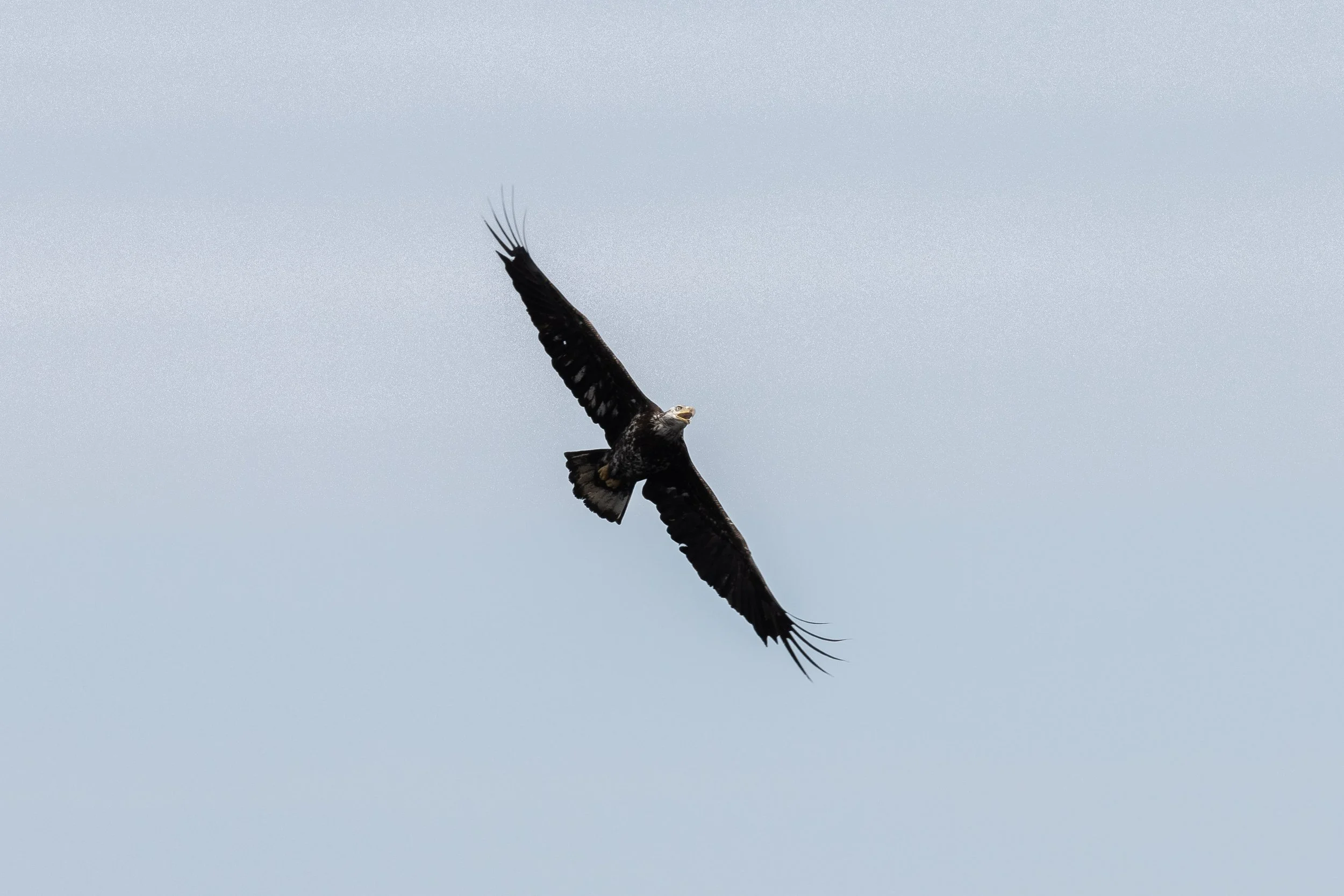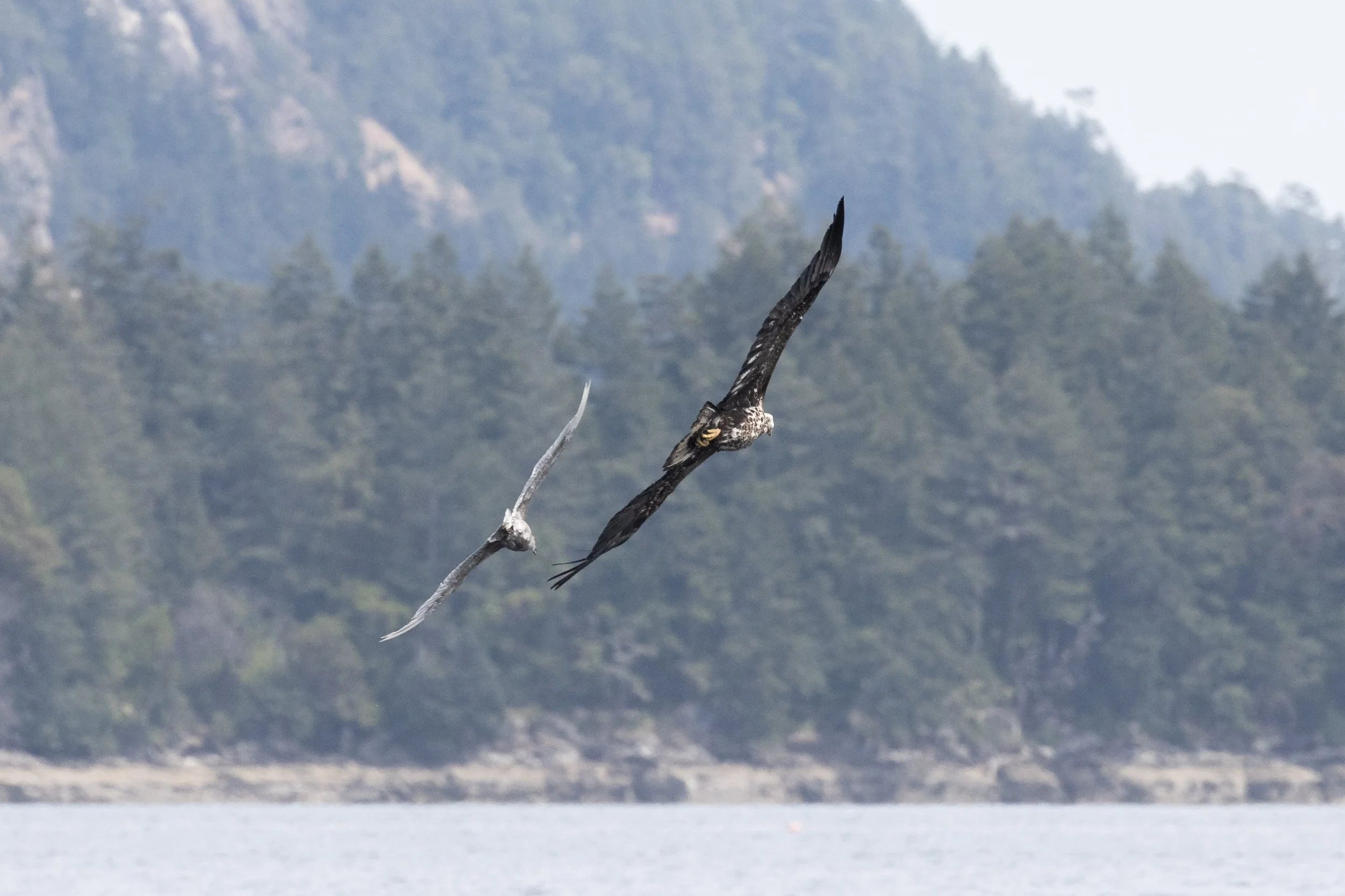June 21, 2024, 10:30 AM - "Zig Zagging" whales!
It was a gorgeous day as our open boat Cascadia and our semi-covered boat Kula headed out of the harbour in search of whales. The Strait of Georgia has been quite rough recently, so we were pleasantly surprised when the water was like glass today! We headed south on calm waters until we came across a humpback whale. We took one look at the fluke of this whale and knew immediately it was Zig Zag (BCX1193)! She’s a regular here in the Salish Sea, and it’s always fun to see some familiar fins.
Thanks to Happywhale, we know Zig Zag was first recorded in 2006 in Hawaii. She has been spotted since in Hawaii, so we know she still breeds and has her calves down there! From her first encounter, we don’t know if she was a calf or not, so we don’t actually know how old she is. Her first record in British Columbia was in 2015 and she’s had three calves since then; Scuba (BCY1225), Schooner (KEY0045), and BCX1193 calf 2023. Humpbacks typically have their first calves at around 6-8 years of age. Since Zig Zag was recorded long before then, she could have had a calf or two that we don’t even know about!
Humpbacks go to warmer waters to have their calves and breed because humpback calves don’t have much blubber. Blubber is essentially fat on whales that keeps them warm in cooler waters. Luckily mom’s milk is almost 50% fat, so the calf can bulk up and make the near-4000-km swim to the feeding grounds. Here, they’ll learn how to eat things like krill, small fish, and plankton. Humpback calves only get about a year with mom before they have to go off on their own.
We watched Zig Zag for a while, got one last fluke and then left her to do her whale things. We had a report of orca further south that we wanted to head to.
When we arrived the whales were all spread out. We had heard the report was of the T077s, and when we arrived we were able to confirm this thanks to the Telephoto lens that we have onboard. We get photos and compare the dorsal fins, saddle patches, and eye patches to those in the catalogue. There aren’t any distinct notches or scars in the T077s, but using saddle patches we confirmed that all four surviving members of this pod were here:
T077 Asja ♀ (1981)
T077C Neftali ♂ (2006)
T077D Alycon ♀ (2009)
T077E Misneach (2016)
T077C Neftali and T077D Alycon have been known to travel apart from their family. So when we initially heard T077s we thought it was either them, or T077 Asia herself and T077E Misneach. to our surprise, it was all of them! Looks like the wandering older children had returned home to Mom. We saw Misneach tucked right behind Asja at all times, with Neftali on their own about 500m from them, and Alycon off even further.
You’ll see that Neftali’s fin is taller than the rest of his pod. This is because he is sprouting. All killer whales - male and female - are born with small curved fins. Female fins will remain this way for life. Males on the other hand will “sprout”, starting at about 13 years old. This means their fin will start growing taller, and will continue to grow until they’re about 20 years old. At that time, their fins could reach 6 feet tall! What’s weird is Neftali is 18 years old, so he should be much bigger than he is. This is a perfect example of orcas proving us wrong. About 90% of the time orcas will be “normal”, but there are always a few times when they’re weird and there is just no explanation!
Regulations state that we can watch whales for an hour, so we did just that before we had to say our goodbyes to the T077s. We headed back up the Strait and made a quick pit stop at Stinky Rocks! Lucky for us, these Steller Sea Lions haven’t left the area to go to Alaska for breeding yet. So we got to watch Stinky Steve and his gang hang out and play around on the rocks for a bit. There were also some little harbour seals hanging out closer to shore. The naturalists got a few shots of them as well, and then we headed back to the harbour!
The onboard naturalists from today, Val Watson and Lucy Willis, captured some great photos of the T077s, Zig Zag, and all the other wildlife from the trip today, which can be viewed below!
T077C Neftali breaking the surface of the water. Photo by Val Watson.
Did you know every breath an orca takes in their lifetime is a conscious decision? Photo by Val Watson.
Matriarch T077 Asja. Photo by Val Watson.
The youngest member of the family T077E Misneach. Photo by Val Watson.
Misneach swimming with mom Asja. Photo by Val Watson.
Neftali is what we call a “Sprouter” - his dorsal fin is currently growing and will eventually be around 6 feet tall. Photo by Lucy Willis.
T077 Asja. Look at how glassy that water is! Photo by Lucy Willis.
Notice that Zig Zag has 2 nostrils instead of 1 like our orca? Photo by Val Watson.
The bumps on a humpbacks mouth are over grown hair follicles. Photo by Val Watson.
We ID our humpbacks by looking at the ventral side of the fluke. They range from all black to all white and have different markings on them. Photo by Val Watson.
Water trickling off Zig Zag’s fluke. Photo by Val Watson.
A refreshing breath before a dive. A humpback can dive to 200 meters! Photo by Val Watson.
Zig Zag fluking with Kula in the background. Photo by Val Watson.
Zig Zag fluking with Cascadia in the background. Photo by Lucy Willis.
The dots on Zig Zag’s tail help us identify her. Photo by Lucy Willis.
Zig Zag about to go for a deep dive. Photo by Lucy Willis.
Stinky Steve! He could be up to 2400 ponds. That’s a starfish in front of him. Photo by Val Watson.
“Stop touching my fur!” - This sea lion probably. Photo by Lucy Willis.
Cascadia with Steller sea lions in the background. Photo by Lucy Willis.
A shy harbour seal poking its head out of the water. Photo by Lucy Willis.
A young bald eagle soaring. Judging by the white on it’s head, it should be nearly full grown! Photo by Val Watson.
This eagle was harassing the gull. Photo by Val Watson.

